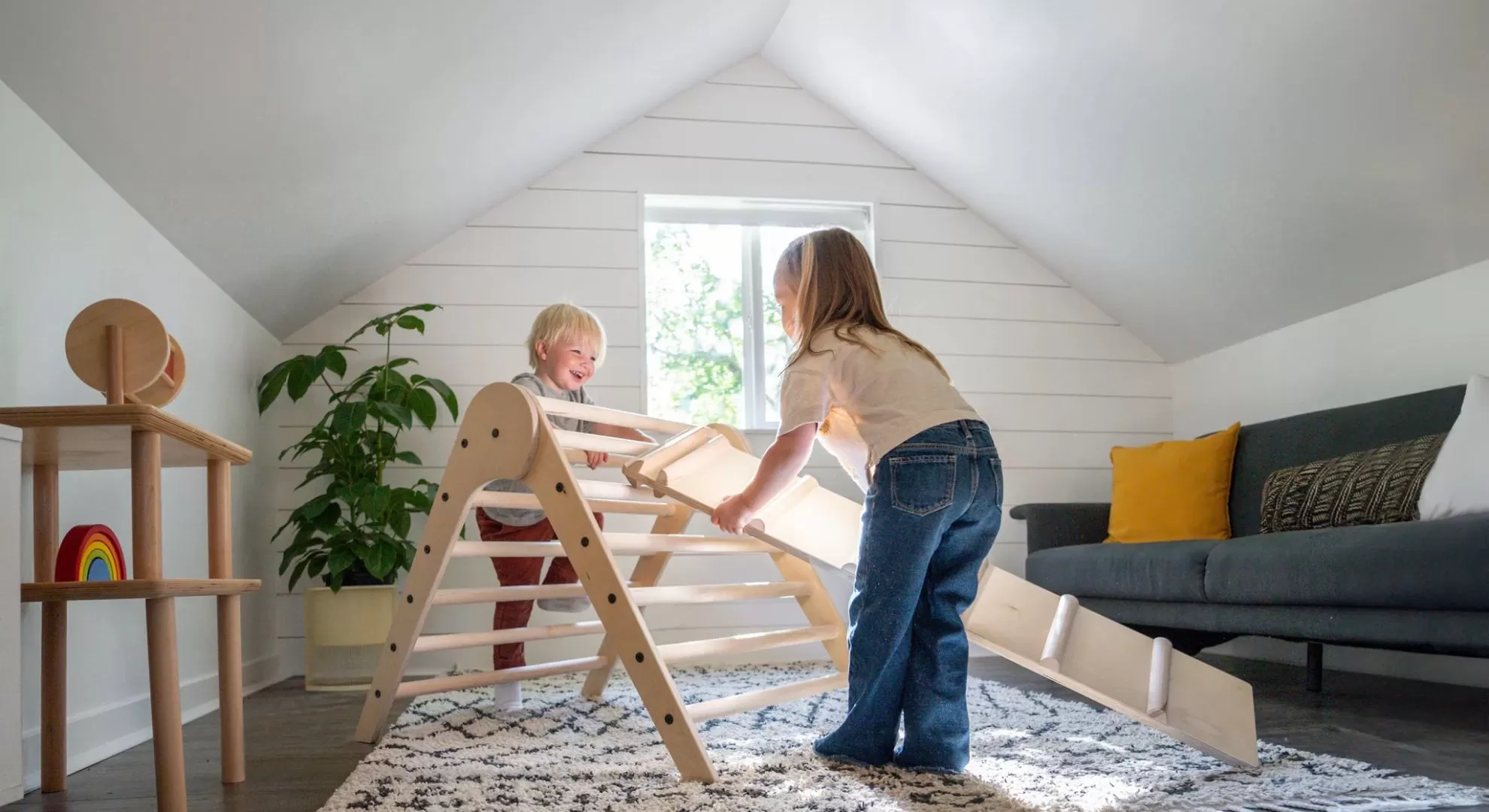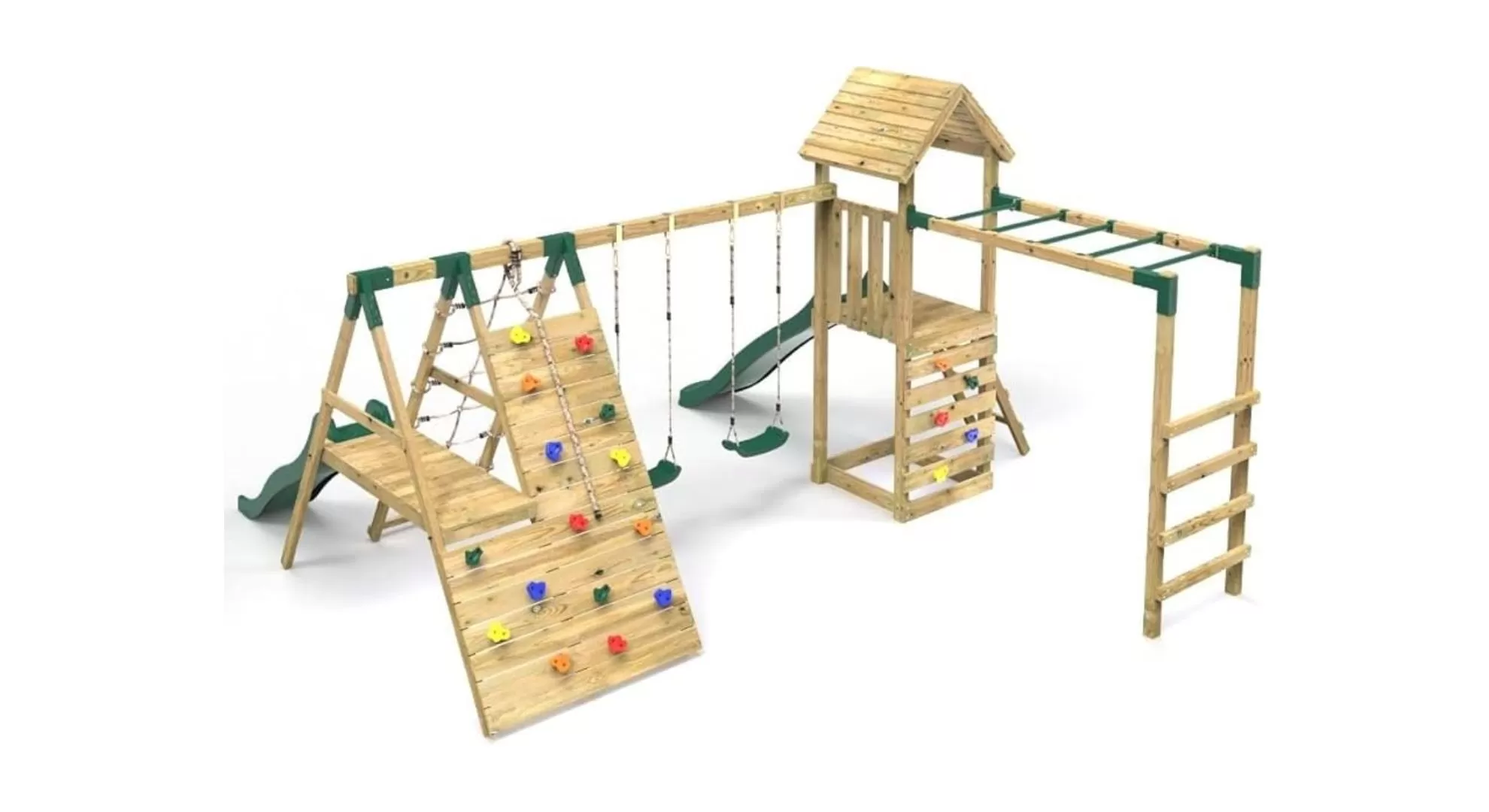A Montessori indoor playground is more than just a play area – it’s a carefully crafted environment where children learn through exploration, movement, and hands-on discovery. Unlike traditional playgrounds filled with flashy plastic toys, Montessori-inspired spaces prioritize natural materials, open-ended play, and child-led activities. In this guide, we’ll break down everything you need to create or choose a Montessori-style play space that aligns with your child’s developmental needs.

Montessori indoor playgrounds are rooted in Dr. Maria Montessori’s philosophy of fostering independence and sensory learning. These spaces typically feature wooden climbing structures, sensory play stations, and age-appropriate challenges that encourage problem-solving. For example, a montessori climbing toy for 1-year-olds might include a low wooden ramp with grips, while older toddlers benefit from balance beams or modular climbing sets.
Key characteristics include:
Natural materials like wood, cotton, or metal (avoiding plastic)
Minimalist design to reduce overstimulation
Accessible storage for self-directed play
Research from the American Montessori Society shows that such environments improve focus and motor skills by 25–40% compared to traditional setups.
Modern parenting faces two major challenges: limited outdoor playtime and screen-time addiction. A Montessori-inspired indoor playground offers a solution.
Take Sarah, a parent from Texas, who transformed her basement into a Montessori indoor playground for toddlers using wooden climbing arches and tactile mats. “Within weeks, my son’s balance improved, and he started inventing his own games,” she shares. Educators also report fewer behavioral issues in classrooms with Montessori-style play areas, as children channel energy into purposeful activities.
For schools, these spaces align with Montessori activity examples like pouring, sorting, or stacking, which develop fine motor skills and logical thinking.
Whether designing a home play corner or a commercial play space, focus on three pillars: safety, functionality, and flexibility.
Start small: A wooden Montessori indoor playground doesn’t require a full room. Use a Pikler triangle or a foldable climbing set in a corner.
Rotate materials: Keep 5–6 activities accessible at a time, like stacking rings or texture boards.
Prioritize safety: Anchor furniture and use soft flooring (e.g., foam tiles or rugs).
Zone planning: Separate areas for climbing, quiet play, and sensory exploration.
Choose adaptable equipment: Modular sets like the NanPlay Wooden Climber allow reconfiguration as children grow.
| Feature | Traditional Playground | Montessori Playground |
|---|---|---|
| Materials | Plastic, metal | Wood, natural fibers |
| Play Style | Structured activities | Child-led exploration |
| Skill Development | Gross motor focus | Balance, problem-solving, creativity |
| Cost (Avg.) | 1,500-5,000 | 800-3,000 (DIY options available) |

Case Study 1: A daycare in Oregon replaced plastic slides with Montessori climbing toys, resulting in a 30% drop in accidents and higher parent satisfaction.
Case Study 2: Emma, a working mom, built a Montessori-inspired indoor playground using budget-friendly items like rope ladders and sensory bins. “It’s the heart of our home now,” she says.
Designing a Montessori indoor playground isn’t about buying expensive equipment—it’s about creating an environment where children feel empowered to explore. By focusing on simplicity, natural materials, and child autonomy, you’ll build a space that grows with your child’s curiosity.
For schools or parents seeking ready-made solutions, brands like NanPlay offer montessori indoor playground equipment that balances safety and creativity.
Everything You Need to Know About Montessori Playgrounds
Guidelines for Authentic Montessori Environments
Thank you very much for your inquiry! Your trust is our greatest motivation. We are committed to offering playgrounds that combine high quality with affordable pricing. Let us bring vitality to your venue!